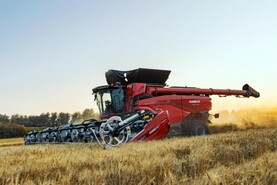While forests provide a range of multipurpose benefits, maximising revenue from timber sales is a key objective for forest owners. Growers have a wide range of options when selling timber, as outlined in this focus.
While price is dictated by domestic and global market conditions, most aspects of timber sales are within the seller’s control, including timing of harvesting, especially clearfells.
While it is advisable to carry out thinning at regular intervals regardless of price fluctuation, the timing of final harvest is largely in the hands of the forest owner.
Regardless of price, felling prematurely should be avoided unless the crop is vulnerable to windthrow. Yield class (YC) is a major consideration when deciding to clearfell.
YC is the average yield of a forest, (m3/ha/annum) over the crop cycle, but a more relevant figure is the current annual increment.
The highest annual increment years are between age 26 to 35
For example, a vigorous YC24 Sitka spruce crop at year 10 has a current annual increment of 17m3/ha, which reaches 34m3 by year 30. It reduces to 27m3 by year 40. The highest annual increment years are between age 26 to 35, so the owner who clearfells at year 26 is missing out on a period of high volume and high-quality log production.
The temptation to cash in as early as year 26 can be irresistible at current high prices, but postponing final harvest until year 31 should increase volume and revenue by 60%.
Carrying out an intermediate thinning instead and waiting five years to clearfell could add a further 160m3/ha in volume, amounting to €13,000/ha in revenue from final harvest and thinning.
The advice, therefore, is to sell when the crop at its peak volume increment, which is between 30 and 35 years.






 This is a subscriber-only article
This is a subscriber-only article










SHARING OPTIONS: